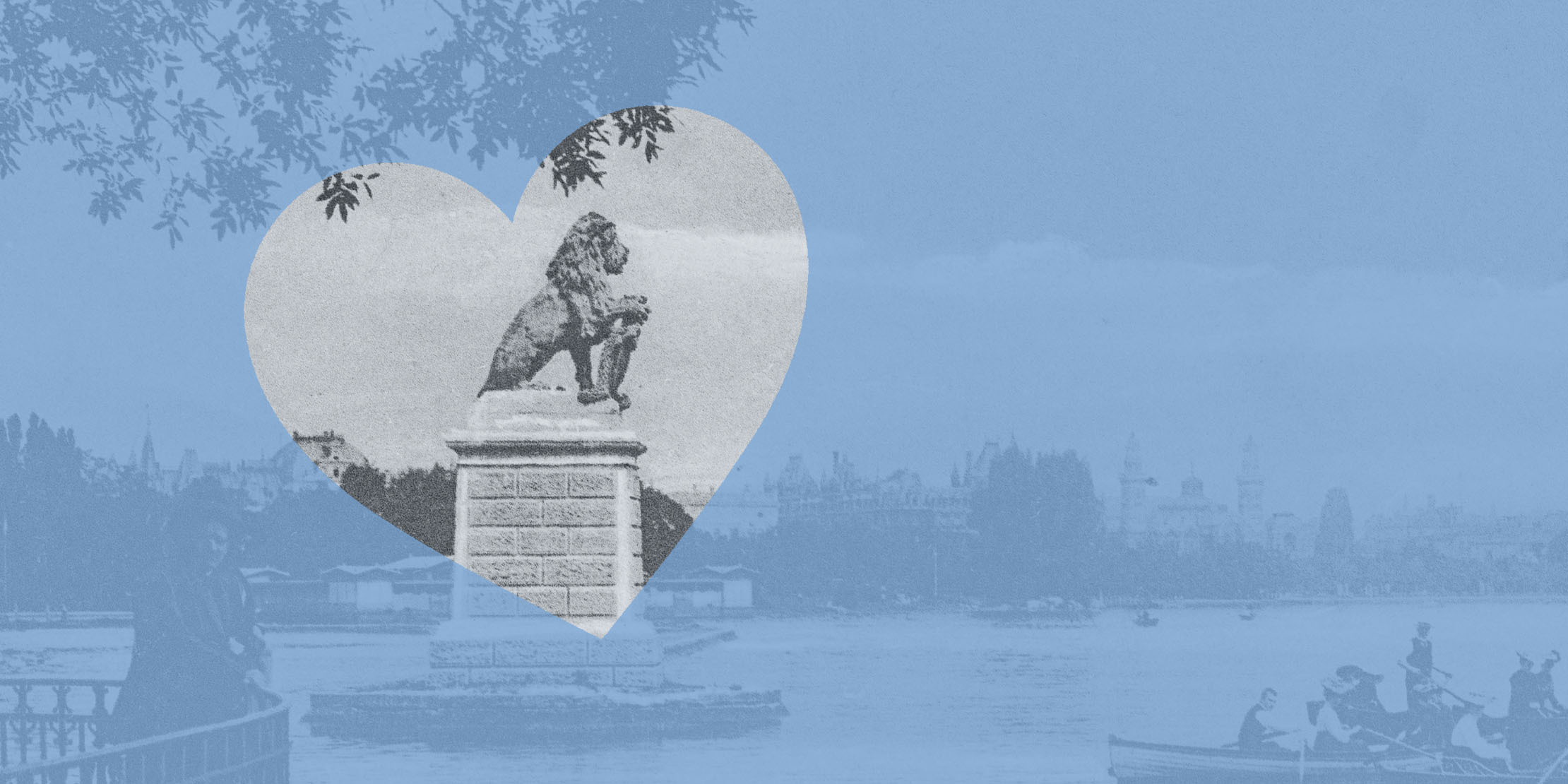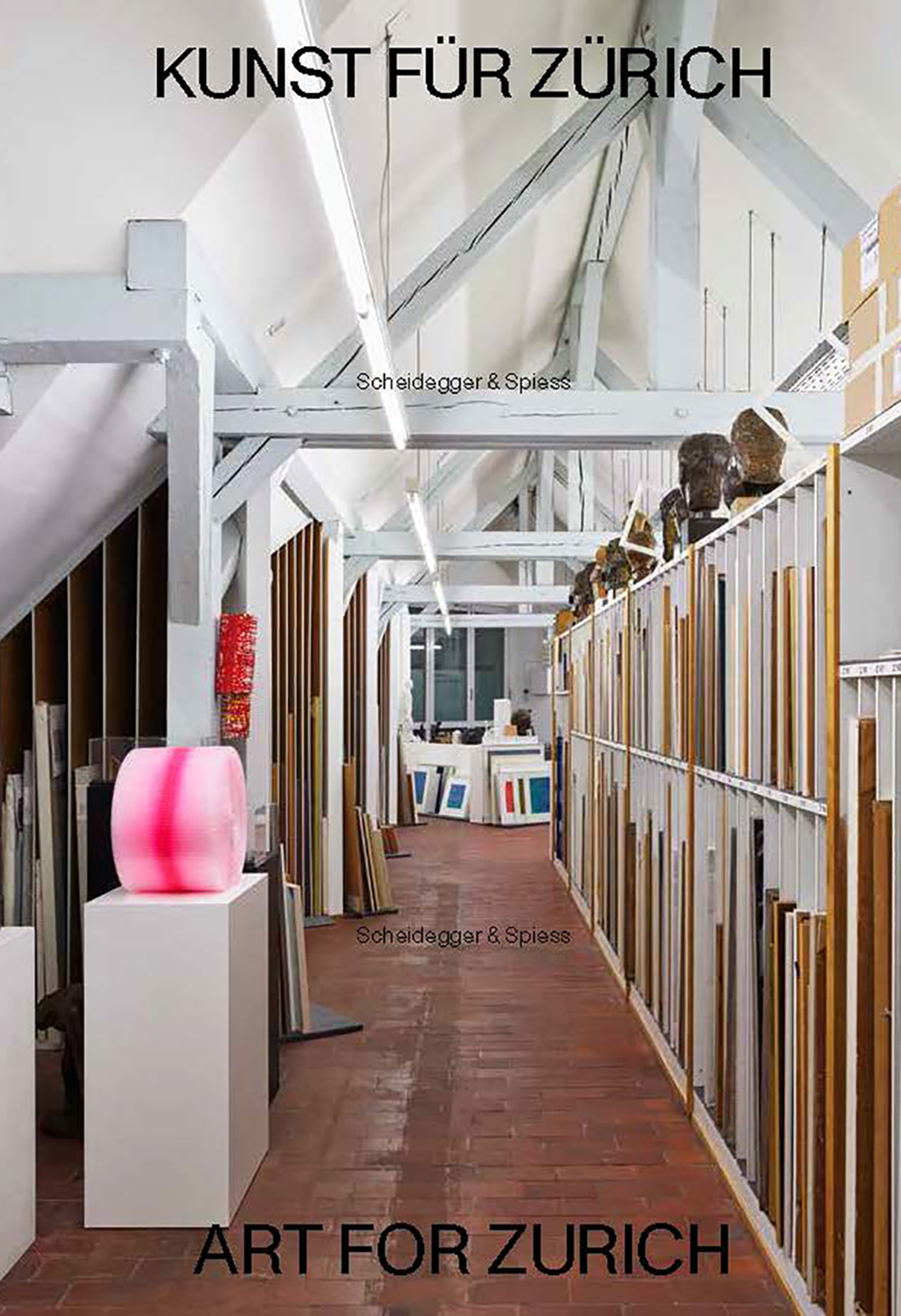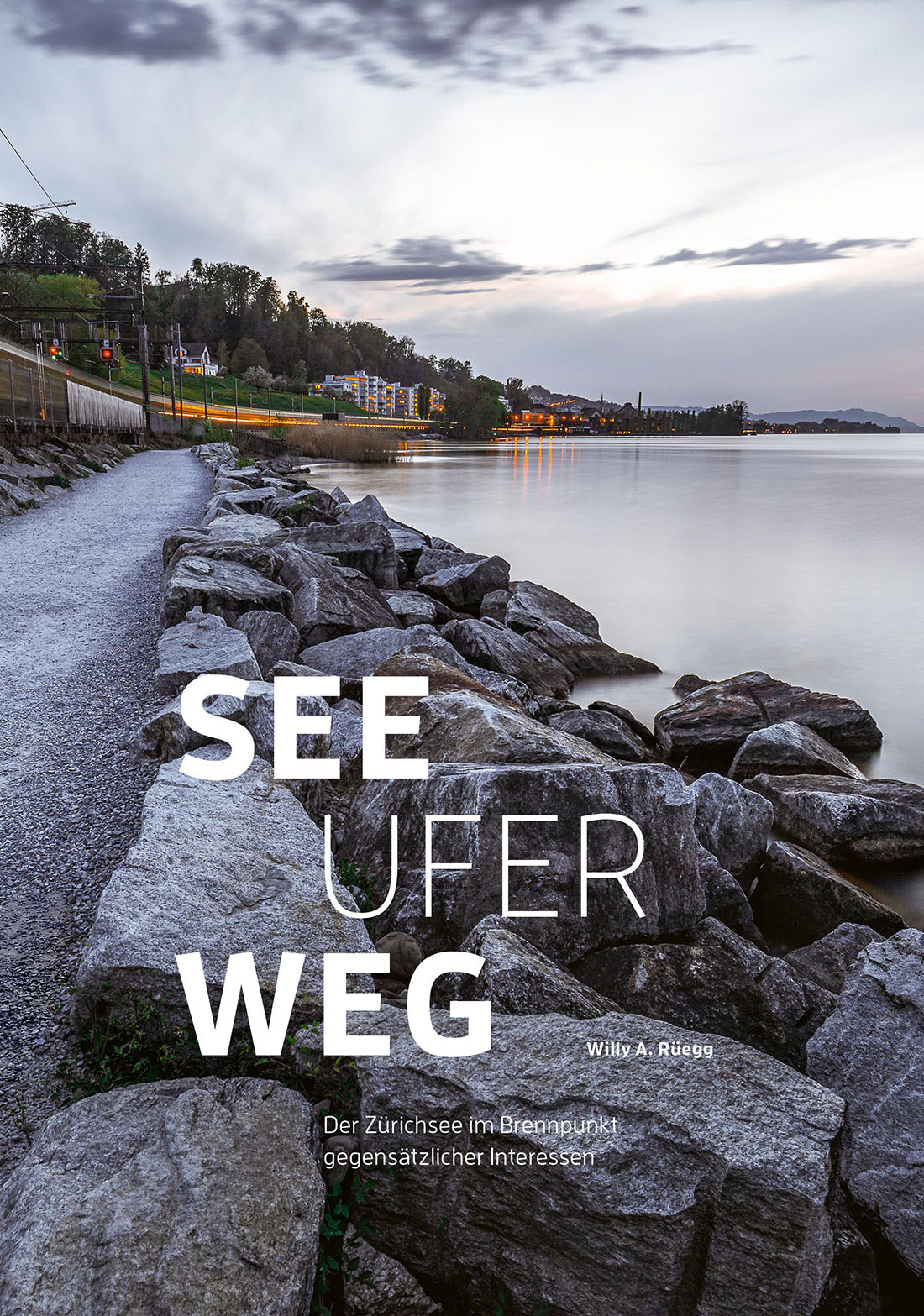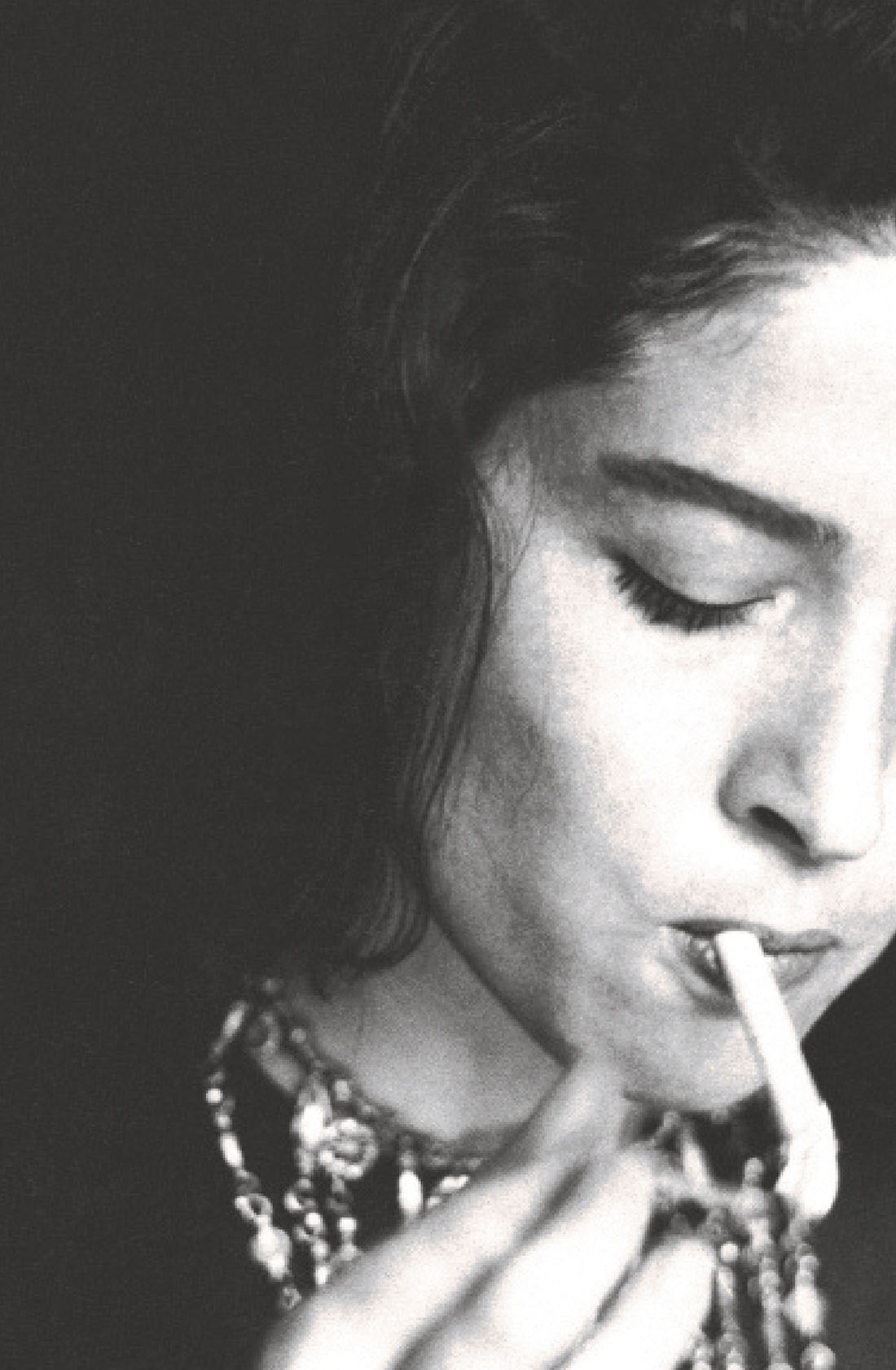
Zürich NEUerschienen 2022
«Zürich NEUerschienen» presents newly acquired Turicensia – topical, recently published books, audiobooks and other media with a connection to the city and canton of Zurich.
A decade of art for Zurich
December 2022. Why does the City of Zurich collect art? How much money does it spend on this? How do you collect art for a city? What makes an artwork ‘from Zurich’? Which pieces did the city buy between 2011 and 2021? Barbara Basting, head of the Fine Arts Department for Zurich, answers these questions in ‘Art for Zurich’.
Readers can see a number of works in their current locations at the municipal departments. Some people might even wish they worked for the municipality just to be able to borrow a work of art for their office.
Barbara Basting’s eminently readable articles are joined by those of four other authors, who also provide fascinating commentary. They appear in German alongside images of the artworks, with translation into English. Corine Mauch’s short but incisive introduction is also worth reading.
‘Art for Zurich’ is available to browse in our Turicensia Lounge. For more about art in and from the city and canton, see the Zurich Bibliography, with more articles from the head of the Fine Arts Department via Swisscovery. Of course, our Graphic Collection also includes works of art from Zurich.
Drink cocktails in style
![‘Sans Pareil – die Kronenhalle Bar’ [‘Peerless – the Kronenhalle Bar’], edited by Sibylle Ryser and Isabel Zürcher](https://www.zb.uzh.ch/storage/app/media/zuerich/zuerich-neu/20221116-TUR-Z%C3%BCrichNEUerschienen-KronenhalleBar.jpg)
November 2022. ‘A bar creates islands in the flow of the day. It creates a distance from productivity and circumvents the efficient use of time,’ write editors Sibylle Ryser and Isabel Zürcher in the foreword to ‘Sans Pareil – die Kronenhalle Bar’. Lovingly designed with simple text and lots of beautiful pictures, the book itself is an island you’ll want to spend time on.
Opened in 1965 by Gustav Zumsteg, the Kronenhalle Bar was supposed to be a place ‘sans pareil’ – without equal. The textile businessman commissioned the famous interior designer Robert Haussmann to fit out his incomparable bar. An owl sitting on a lamp base is the work of animal-lover Diego Giacometti. In the new publication, art historian Isabel Zürcher tells the stories of these people, a Viennese role model, a temporary cheap counterpart and much more. The book will have you yearning to drink a ‘Dürrenmatt’ on one of the green seats in the Kronenhalle Bar’s timeless cosmopolitan surroundings. Or a ‘Kronenhalle Special’. Or to mix the cocktails yourself using the recipes provided.
The editors also offer a glimpse of the many works of art in the Kronenhalle and its little sister in another book. Like ‘Sans pareil’, it’s available to browse in our Turicensia Lounge. You can find more reading material on the Kronenhalle and Robert Haussmann in the Zurich Bibliography.
A poet’s glimpse of Paradeplatz
![‘In Zürich, auf dem Mond – zwölf Monate am Paradeplatz’ [‘In Zurich, on the moon – 12 months on Paradeplatz’] by Yari Bernasconi and Andrea Fazioli](/storage/app/media/zuerich/zuerich-neu/20221018_TUR_Zuerich_NEUerschienen_Mond.jpg)
October 2022. For one year, a poet and a crime writer meet every month on Paradeplatz. Together, they read a poem and observe secret agents, joking angels and lots of white shirts. They meet the talking caterpillar from ‘Alice in Wonderland’ and even Rasputin once. They sit there in a ‘Wolke der Wahrscheinlichkeit’ and become ‘Notizbuchfische’.
The result is the book ‘In Zürich, auf dem Mond’, a poetic reportage in 12 parts, illustrated with smartphone snapshots. The poet and the crime writer are Yari Bernasconi and Andrea Fazioli, whose talents also include teaching, journalism and presenting. They made their way from Bellinzona and Hinterkappelen to Zürich in 2018 and let their gaze and thoughts wander on Paradeplatz. Now and then, the protagonists’ location begins to seem beside the point. But the authors always use it as their starting point and return to it in the text.
This new edition is available to browse in our Turicensia Lounge and to borrow in the self-service section. We also have the original Italian version in stock. Careful references to quotations, figures and other elements encourage the reader to continue reading and listening after they’ve finished the book.
You can find more information on Paradeplatz in the Zurich Bibliography.
Zurich’s Blüemliquartier
![‘Frisch, Fussball und Fabriken – die bewegte Vergangenheit des Zürcher Blüemliquartiers’ [‘Frisch, football and factories – the fascinating history of Zurich’s Blüemliquartier’] by Benedikt Widmer](/storage/app/media/zuerich/zuerich-neu/20220914-TUR-NEUerschienen_Bluemliquartier.jpg)
September 2022. Where Schneeglöggliweg meets Edelweissstraße and Gladiolenweg skirts a few buildings, you’ll find a little idyll: the Blüemliquartier neighbourhood. Alongside residential buildings, offices and shops, this little corner of Zurich is also home to a school, a stadium and an outdoor swimming pool: the Letzibadi, built by writer and architect Max Frisch. The city’s first high-rise buildings and the Letzigrund stadium are on the doorstep.
The Blüemliquartier neighbourhood in District 9 wasn’t always such a tranquil spot. This is where the city gallows once stood, people from west Africa were exhibited, a driverless tram raced towards the Utogrund school building and the residents were plagued by brisk through traffic. SRF journalist Benedikt Widmer tells these and other stories in his book ‘Frisch, Fussball und Fabriken – die bewegte Vergangenheit des Zürcher Blüemliquartiers’. Urs Bolz takes his readers on a visual tour. Combined with pictures from the past, his photographs create a feel for the neighbourhood’s atmosphere.
The book will soon be available to browse in our Turicensia Lounge and to borrow in the self-service section. You can find more information on District 9 in the Zurich Bibliography.
The polymath Johann Jakob Scheuchzer
August 2022. In spring 1692, Johann Jakob Scheuchzer travels with two companions to Altdorf bei Nürnberg to study. The soon-to-be 20-year-old immerses himself in the study of medicine, chemistry, mathematics, physics, botany and palaeontology. He also learns to fence and dance.
He almost forgets he went there to study to become a doctor. He finally achieves his professional aims and plans in Utrecht. But his wide range of interests remains. As such, Scheuchzer doesn’t ‘just’ go on to become Zurich’s city doctor – he also becomes a professor of mathematics and a library and museum curator.
Urs B. Leu, head of our Old Prints and Rarities Special Collection, has written the first comprehensive biography of the polymath. The result is an informative, well-researched and entertaining biography that taps into a piece of academic history.
‘I’ve always been fascinated by polymaths,’ says the historian and academic. He’s already written a biography of another, Conrad Gessner. As nobody else had dared tackle a heavyweight like Scheuchzer, despite the 350th anniversary of his birth, Leu took on the task. He already knew a great deal before immersing himself for a year in Scheuchzer’s works and estate, and he finally began writing last summer.
Leu will also touch upon the busy polymath in our next exhibition, ‘Wind and weather – Zurich’s climate since the Stone Age’. Scheuchzer also happened to be a pioneer of climate research.
The Zurich print co-operative
July 2022. What began in 1898 with the Kirsten & Zeisberg printing press ends in 2022 with the Genossenschaftsdruckerei Zürich – the Zurich print co-operative, known as gdz for short. After 124 years, it’s all over: the company is in liquidation and most of the print equipment has been sold abroad – where printing costs less. Cheaper competitors are just one of the issues the gdz had to deal with.
In his book ‘gdz – Am Anfang war die Zeitung’, Zurich economic historian Adrian Knoepfli tells the story of the gdz, which also takes in the history of the Swiss labour movement and the print industry. The publication is lavishly illustrated and includes large black-and-white photographs from Ernst Koehli, the ‘chronicler of Swiss society’.
From its beginnings to the 1970s, the gdz printed the ‘Volksrecht’, the newspaper for Zurich’s Social Democrats. Other social democratic papers made their way from gdz to their readership, such as ‘Arbeit’, a daily for the Zurich Oberland and official organ of the Social Democratic Party of Switzerland and Zurich canton.
This new edition is available to browse in our Turicensia Lounge and to borrow in the self-service section.
The names in Zurich’s street names
June 2022. No alley is too narrow, no square too obscure to honour someone. Almost 400 streets, paths, squares, steps, courtyards, bridges, installations, terraces and quays in the city of Zurich bear the name of a person – some better known than others. For his book “Strassen mit Persönlichkeit”, Heinrich Wegmann researched, visited and photographed these structures.
Arranged by district, it tells of the people who are honoured and the structures that bear their names. Some stories are sufficiently exceptional to be expanded into a separate chapter. “Heinrich Wegmann’s view of the 169 characters is based on facts, but it is always personal”, writes Margrit Huser, head of the Fraumünster Women, in the introduction. Readers can find all 398 of the structures named after people in a meticulously compiled index.
“Brupbacher-Platz was an especially interesting find”, says the author, who himself hails from the city. “Actually there are two squares with the name. One honours Fritz Brupbacher, the other his wife Paulette.” And who is missing from the honours list? In “Strassen mit Persönlichkeit”, Heinrich Wegmann lists five names. Whom would you name a street after?
You can consult the book in our reference library on Zurich in the Turicensia Lounge. For more on street names in the city and canton of Zurich see the Zurich Bibliography.
Johannes Brahms in Zurich
May 2022. Johannes Brahms, a man with a taste for evening revelry, is sitting in Zurich’s Öpfelchammer enjoying apple cake and kirsch. At the cantonal hospital, surgeon Theodor Billroth is performing a caesarean section on a living patient for the first time in his career. On an outing with Friedrich Hegar, principal conductor of the Tonhalle Orchestra, Brahms discovers the Alt-Nidelbad house high above Lake Zurich. It is in front of this same house, in a convivial gathering, that Brahms provokes an argument between Billroth and the intellectual Josef Viktor Widmann.
Brahms spends the summer of 1874 in that same house, leaving behind traces of his presence. When Kaspar Wolfensberger grows up there decades later, the musician is still omnipresent. In “Die Brahmskommode”, Wolfensberger recounts tales of Brahms, his Swiss friends, and the Alt-Nidelbad house in Rüschlikon. The author evokes the time between Brahms’s first concert in Zurich and the opening of the city’s new Tonhalle.
“Die Brahmskommode” is available to browse through in our Turicensia Lounge, while you can borrow the copy from our open stacks to immerse yourself in the historical narrative at home. For more about Brahms in Zurich, the Nidelbad and the Alt-Nidelbad house – now known as the Brahms house – see the Zurich Bibliography.
So close to nature
April 2022. Spring is in the air. Just in time for the season, Zurich-based photographer and author Marco Volken’s new book “Raus aus Zürich” offers a selection of 25 short hikes, walks and excursions. The first of them does not ever require nature enthusiasts to leave the city, since its destination is Sihlfeld Cemetery.
The others offer a similarly peaceful experience, along with lots more nature, views and walking time. They are no more than an hour by public transport from the centre of Zurich. Volken takes readers from the Gisliflue in the west to the ravine around Bauma in the east. The northernmost destination is the Rhine, while the furthest south is the Zugerberg. Each suggestion is accompanied by background information and route details along with a map. Numerous photographs provide an initial impression of the natural paradises presented.
Marco Volken is not unknown, and “Raus aus Zürich” is far from his first book – but it takes him to uncharacteristically low-lying areas: for the last 30 years, he has mostly been taking photographs in the mountains. However, he has already made one exception for Zurich, with another walking guide.
“Raus aus Zürich” can be found in the reference library on Zurich in our Turicensia Lounge and will soon be added to the open stacks as well. For more walking guides to Zurich see the Zurich Bibliography.
A women’s refuge for Zurich
March 2022. “There was much drinking of wine and smoking”, writes Christina Caprez in her book about the beginnings of a working group that, in the 1970s, tackles the issue of violence against women. It may sound like a decidedly unpromising start, but in 1977, women from the group are responsible for setting up the society for the protection of abused women and their children, and opening an advice centre in Zurich. Two years later they add a safe apartment that is soon full to bursting and is superseded by a women’s refuge.
In “Wann, wenn nicht jetzt”, journalist and author Christina Caprez tells the story of Zurich’s women’s refuge and the battles surrounding it, and places it in the broader social context. The narrative is interspersed with the recollections of eyewitnesses such as the journalist Marianne Pletscher, who made a film about the refuge in its early days.
There are also personal insights from women who found shelter and who tell of their experiences, as well as professionals associated with the refuge, while experts fill in the background to the legal situation, migration and other issues.
Further publications about the Zurich women’s refuge can be found in our holdings. You can find numerous other books along with newspaper and magazine articles about Zurich’s women’s movement in the Zurich Bibliography.
A desirable location: the shores of Lake Zurich
February 2022. Last September, Zurich’s electorate voted on a popular initiative to safeguard the right to sunlight on public green areas by the city’s lakeside. It was by no means the first, and will certainly not be the last, conflict around the shores of Lake Zurich.
Zurich’s lake used to look very different. More than 90% of its shore has been artificially created by land reclamation. Behind these human-made changes lie many political disputes. In his book “Seeuferweg – der Zürichsee im Brennpunkt gegensätzlicher Interessen”, historian Willy A. Rüegg recounts some of them. The text is illustrated with historical and present-day images.
The book’s title, “Seeuferweg” (“path around the lake shore”) is more utopia than reality. In fact, no continuous path around Lake Zurich exists: only sections of it have been completed. The idea of a path running right around the lake has been mooted for a long time. An initiative to that effect is currently pending with the cantonal government.
“Seeuferweg – der Zürichsee im Brennpunkt gegensätzlicher Interessen” is in the reference library on Zurich in our Turicensia Lounge. For more information and impressions of Lake Zurich see the Zurich Bibliography.
Seven lives
January 2022. “I wanted to get away, I wanted to go to the theatre”, writes Elisabeth Kübler. She has to complete teacher training college before she is allowed to go to the stage studio in Zurich. Born in 1931 into a middle-class family, she becomes an actor and appears in Biel, Solothurn, Hannover and at the Schauspielhaus Zürich. It is her second life, but not her last. Later, she joins Circus Knie. Finally, as she nears 40, she becomes a gallerist.
Multiple voices tell her story in “Elisabeth Kübler – vom Leben einer Unangepassten”. Its subject also has her say, sometimes alone, and sometimes in conversation. Various authors, including Elisabeth Joris, write about her.
The pages of small format, black-and-white photographs are reminiscent of a photo album – the kind your grandparents keep on a shelf. Full-page colour photographs give an impression of Elisabeth Kübler’s everyday art, which Christine Lötscher writes about in the last chapter. Taken together with the texts, the images find unity in a life full of changes.
The exhibition rooms of Galerie Maeght, which Elisabeth Kübler runs initially with her husband and then, up until the 1990s, alone, are located close to the Zentralbibliothek Zürich on Predigerplatz. Today they are home to the Musée Visionnaire.

![‘Johann Jakob Scheuchzer (1672-1733) – Pionier der Alpen- und Klimaforschung’ [‘Johann Jakob Scheuchzer (1672-1733) – pioneer of Alpine and climate research’] by Urs B. Leu](/storage/app/media/zuerich/zuerich-neu/20220817-TUR-Zuerich-NEUerschienen-Scheuchzer.jpg)
![‘gdz – am Anfang war die Zeitung’ [‘gdz – in the beginning was the newspaper’] by Adrian Knoepfli](/storage/app/media/zuerich/zuerich-neu/20220719-TUR-ZuerichNEUerschienen-Juli.jpg)





